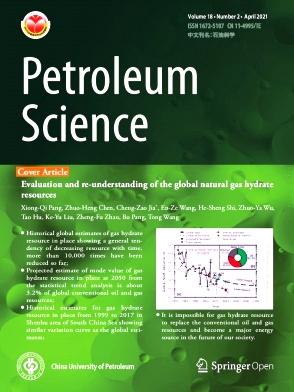A fast amplitude preserving three-parameter 3D parabolic Radon transform and its application on multiple attenuation
IF 6
1区 工程技术
Q2 ENERGY & FUELS
引用次数: 0
Abstract
Seismic wavefields propagate through three-dimensional (3D) space, and their precise characterization is crucial for understanding subsurface structures. Traditional 2D algorithms, due to their limitations, are insufficient to fully represent three-dimensional wavefields. The classic 3D Radon transform algorithm assumes that the wavefield's propagation characteristics are consistent in all directions, which often does not hold true in complex underground media. To address this issue, we present an improved 3D three-parameter Radon algorithm that considers the wavefield variation with azimuth and provides a more accurate wavefield description. However, introducing new parameters to describe the azimuthal variation also poses computational challenges. The new Radon transform operator involves five variables and cannot be simply decomposed into small matrices for efficient computation; instead, it requires large matrix multiplication and inversion operations, significantly increasing the computational load. To overcome this challenge, we have integrated the curvature and frequency parameters, simplifying all frequency operators to the same, thereby significantly improving computation efficiency. Furthermore, existing transform algorithms neglect the lateral variation of seismic amplitudes, leading to discrepancies between the estimated multiples and those in the data. To enhance the amplitude preservation of the algorithm, we employ orthogonal polynomial fitting to capture the amplitude spatial variation in 3D seismic data. Combining these improvements, we propose a fast, amplitude-preserving, 3D three-parameter Radon transform algorithm. This algorithm not only enhances computational efficiency while maintaining the original wavefield characteristics, but also improves the representation of seismic data by increasing amplitude fidelity. We validated the algorithm in multiple attenuation using both synthetic and real seismic data. The results demonstrate that the new algorithm significantly improves both accuracy and computational efficiency, providing an effective tool for analyzing seismic wavefields in complex subsurface structures.
快速保幅三参数 3D 抛物线拉顿变换及其在多重衰减中的应用
地震波场在三维(3D)空间传播,精确描述波场对了解地下结构至关重要。传统的二维算法由于其局限性,不足以完全表示三维波场。经典的三维 Radon 变换算法假定波场的传播特性在所有方向上都是一致的,而这在复杂的地下介质中往往不成立。为了解决这个问题,我们提出了一种改进的三维三参数 Radon 算法,该算法考虑了波场随方位角的变化,能提供更精确的波场描述。然而,引入新参数来描述方位角变化也给计算带来了挑战。新的拉顿变换算子涉及五个变量,不能简单地分解成小矩阵来进行高效计算;相反,它需要大量的矩阵乘法和反演运算,大大增加了计算负荷。为了克服这一难题,我们整合了曲率和频率参数,将所有频率算子简化为相同的算子,从而大大提高了计算效率。此外,现有的转换算法忽略了地震振幅的横向变化,导致估计的倍数与数据中的倍数不一致。为了增强算法的振幅保护,我们采用了正交多项式拟合来捕捉三维地震数据中的振幅空间变化。结合这些改进,我们提出了一种快速、保留振幅的三维三参数 Radon 变换算法。该算法不仅在保持原始波场特征的同时提高了计算效率,还通过提高振幅保真度改善了地震数据的代表性。我们使用合成和真实地震数据对该算法进行了多重衰减验证。结果表明,新算法显著提高了精度和计算效率,为分析复杂地下结构的地震波场提供了有效工具。
本文章由计算机程序翻译,如有差异,请以英文原文为准。
求助全文
约1分钟内获得全文
求助全文
来源期刊

Petroleum Science
地学-地球化学与地球物理
CiteScore
7.70
自引率
16.10%
发文量
311
审稿时长
63 days
期刊介绍:
Petroleum Science is the only English journal in China on petroleum science and technology that is intended for professionals engaged in petroleum science research and technical applications all over the world, as well as the managerial personnel of oil companies. It covers petroleum geology, petroleum geophysics, petroleum engineering, petrochemistry & chemical engineering, petroleum mechanics, and economic management. It aims to introduce the latest results in oil industry research in China, promote cooperation in petroleum science research between China and the rest of the world, and build a bridge for scientific communication between China and the world.
 求助内容:
求助内容: 应助结果提醒方式:
应助结果提醒方式:


